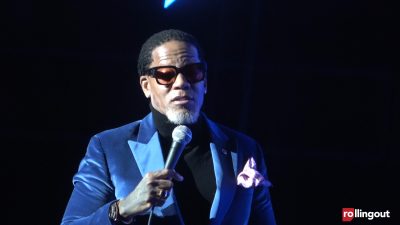A new book by Crystal R. Sanders, an associate professor of African American studies at Emory University, unveils the lasting financial damage inflicted on historically Black colleges and universities through discriminatory state policies, highlighting a debt that remains unpaid decades later.
The calculated dismantling of Black higher education
During the Jim Crow era, southern states developed a deceptively elegant solution to avoid integrating their white universities: they would pay for Black students to attend graduate programs anywhere else. This practice — known as segregation scholarships — appeared generous on the surface but masked a sinister reality: the money came directly from HBCU budgets, systematically draining resources from institutions built to serve Black communities.
In her groundbreaking work A Forgotten Migration: Black Southerners, Segregation Scholarships, and the Debt Owed to Public HBCUs, Sanders meticulously documents how 16 states implemented these programs, with nine explicitly diverting funds from Black colleges to finance them. This revelation provides a crucial context for understanding the persistent financial challenges facing HBCUs today.
A legacy of economic inequality
The financial impact of this historical theft continues to reverberate through halls of HBCUs nationwide. While these institutions generate an impressive $16.5 billion in annual economic impact across the United States, they operate with severely limited resources. Not a single HBCU has achieved a billion-dollar endowment — in fact, the combined endowments of all HBCUs total less than $5 billion.
Tennessee State University stands as a stark example of this systemic inequality. As the state’s only public Black college, it has suffered decades of severe underfunding traced directly to these discriminatory practices. Current estimates suggest Tennessee owes the institution between $7-8 billion in historical funding — a debt that remains unpaid.
Resistance and resilience in the face of segregation
Before 1936, only seven institutions across the entire South offered graduate programs for Black students. Even after the 1938 Supreme Court ruling in Missouri ex rel. Gaines v. Canada mandated equal access to legal education, southern states found creative ways to maintain segregation while technically complying with the law.
The segregation scholarship system forced countless brilliant Black scholars to leave their communities to pursue advanced degrees. Many faced discrimination and isolation at northern institutions, yet showed remarkable resilience by returning south to support HBCUs and mentor future generations.
Civil rights attorney Fred Gray exemplifies this spirit of resistance. After experiencing firsthand the barriers to legal education in his home state, he made it his mission to return to Alabama and dismantle segregation through the courts. His subsequent legal victories played a crucial role in desegregating public higher education throughout the state.
The global impact of HBCUs
Despite systematic attempts to limit their reach, HBCUs have produced leaders who shaped not just American society but global movements for justice and equality. From Supreme Court Justice Thurgood Marshall and Chadwick Boseman to countless other innovators and changemakers, these institutions have consistently punched above their weight in terms of impact and influence.
Sanders’ research continues to explore these connections, including upcoming work on the experiences of African students at Black colleges and their subsequent influence across the diaspora. This broader perspective helps illuminate the truly international significance of these institutions.
A call for recognition and restitution
The publication of A Forgotten Migration comes at a critical moment for HBCUs. As these institutions face ongoing funding challenges and political pressures, understanding their historical context becomes increasingly important. The documented pattern of systematic resource denial provides a crucial context for current debates about education funding and racial equity.
The research makes clear that the current struggles of HBCUs are not accidental but result from deliberate policies designed to undermine Black higher education. This history demands more than acknowledgment; it requires concrete action to address the massive funding disparities that continue to impact these vital institutions.
For supporters and alumni of HBCUs, this work provides powerful ammunition in the ongoing fight for equitable funding and recognition. It transforms what might have seemed like isolated budget issues into evidence of a broader pattern of discrimination that requires systematic remedy.
As debates about educational equity and reparative justice continue to evolve, Sanders’ work serves as a crucial reminder that the legacy of segregation remains deeply embedded in our educational system. The question now is not whether HBCUs deserve additional support, but how to properly account for and address decades of intentional underfunding that continue to shape educational opportunities today.












